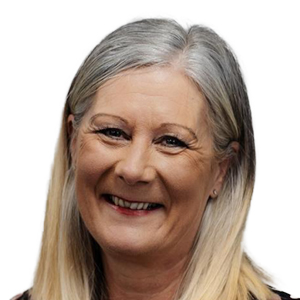The world has changed radically in the last two years. A mixture of rising inflation, the shifting geopolitical landscape, supply chain pressures and a newly mobile workforce – not forgetting a global pandemic – have rendered long-established playbooks obsolete.
In the business community, there’s a tangible sense of wanting to move forward and set a plan for the future, and yet there remains so much uncertainty. At Criticaleye’s recent
Growth Company Retreat, held in association with
finnCap and
Smith & Williamson, the focus of Day One’s discussion was on how Boards and leadership teams can build out a strategy that is right for customers, employees and investors.
Stuart Andrews, Managing Director at small-cap broker finnCap, commented: “Inflation is currently off the scale in terms of what we've seen over the last 15-20 years. To a large extent, we have a lot of management teams and a lot of investors who are in a wholly new environment.
“I think until we unravel inflation and interest rates... we're going to remain in a more difficult investing environment. We are just going to have to navigate those waters as generations before us have done.”
It seems that last year’s deal frenzy, which in the UK saw over £9 billion of equity capital raised on AIM, the London Stock Exchange’s junior market for high-growth businesses, and over £40 billion in private-equity backed deals, is unlikely to be repeated in 2022. Stuart added: “I don’t see a huge number of consumer deals being done in the first quarter of this year from an M&A perspective, because I think ultimately, no one really knows what the impact of inflation will be on the bottom line.”
Straight Talking
The strength of relationships between executive and non-executive directors is going to be crucial over the next 24 months.
Krishant Modasia, Business Development Executive for Private Equity and AIM at Criticaleye, said, “Strategic alignment will be tested in boardrooms over the coming months, whether it relates to an IPO, exit strategy or acquisition.
“We are moving into a tougher economic environment. In my mind, that’s when the quality of management teams and the integrity of Boards will start to show, as it’s the moment when good leadership is most needed.”
Mark Seligman, Senior Independent Director for NatWest Group, noted that the key thing for CEOs, when communicating with the Chair and Board, is to stay open and honest. He explained that, “if the Board feels you are not telling the truth, the relationship starts to unravel quite seriously.”
It was a point that
Marnie Millard, Non-executive Chair of Marks Electrical Group plc, built upon. “I think being honest, transparent and keeping the Board informed between formal sessions is incredibly important,” she told the audience, adding that it’s up to the Chair to ensure that the management team and NEDs feel able to challenge and have robust, constructive conversations.
The increased uncertainty is something that Boards need to accept. “The water from every business I'm touching at the moment is very muddy and murky, and we've got to learn to live with that. Therefore, I think the conversation with the leadership team and the Board should be broad,” continued Marnie.
“Don't get bogged down in too much uncertainty. Agree what the areas of focus are going to be and make those happen, but keep your eye on the ball. When you see change, act upon it quickly and move the business accordingly,” she said.
Richard Segal, Chair of Peach, a global technology business and cloud-based provider, emphasised the importance of Boards backing chief executives and management teams. “One of the Chair’s roles is to raise the bar of ambition of the CEO. So, if the CEO takes a decision with the Chair’s backing, then the Chair needs to stand in the CEO’s corner, because sometimes you roll the dice and events don’t turn out as planned.
“That sort of collective responsibility is critical as it goes to the level of trust between the Chair and CEO, which is [needed] for a successful relationship.”
At the same time, business performance will always matter. “Ultimately, Boards expect the CEO to generate impressive results,” Richard said. “If a CEO is a constant underachiever, that's going to cause problems regardless of the positive characteristics and talent that a CEO may have.
“Outperforming on financial performance will generate increased confidence in the CEO from the Board. This, in turn, will increase the probability of the Board backing the CEO with expansion plans, internal capital projects and/or M&A.”
If management and the Board are aligned, then they can go to investors with a clear narrative for growth. And if 2021 showed anything, it’s that there’s plenty of capital in both the private and public markets to back ambitious leadership teams.
The next Community Update will explore the advantages of regional empowerment in greater depth, from both a customer and leadership perspective.



